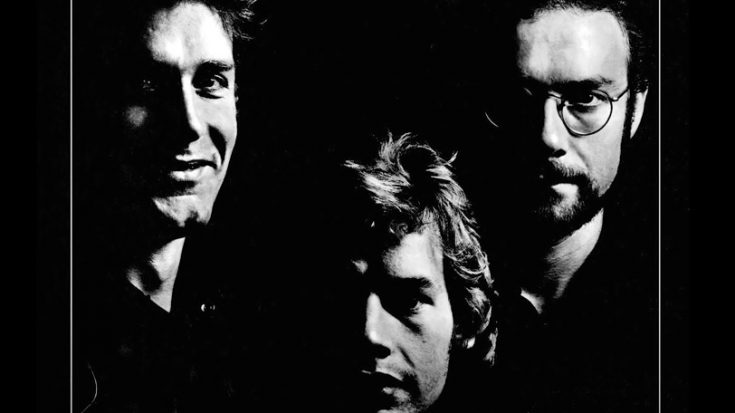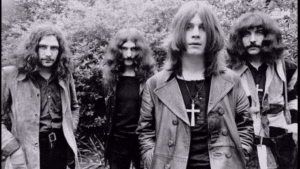7 King Crimson Songs That Surely Will Always Be Good

King Crimson / Youtube
A mere five years. That’s all the time King Crimson had to etch their name into the annals of rock history. Born from the tumultuous 1970s, they navigated a tempestuous journey marked by constant lineup changes. Yet, amidst the chaos, they crafted a discography that was as bold as it was groundbreaking. Their music, a defiant push against the boundaries of sound, was a sonic revolution.
It was a time of experimentation and exploration for the band, a period when they fearlessly challenged the status quo. With each album, they unveiled a new facet of their sound, leaving a trail of innovation in their wake.
Their impact was so profound that Prog rock magazine, in a testament to their enduring brilliance, selected ten of their finest tracks from this explosive era. Let’s dive deeper into this sonic treasure trove and revisit seven songs that continue to resonate, proving that King Crimson’s music is as timeless as it is revolutionary.
7. “The Night Watch” (1974)
A canvas painted with sound. That’s what King Crimson achieved with their ballads. Amidst their progressive rock explorations, they possessed an uncanny ability to craft emotionally charged, melodic pieces. A prime example is their interpretation of Rembrandt’s masterpiece.
“The Night Watch” is more than just a musical accompaniment to the painting; it’s a sonic reimagining. Fripp’s guitar work, captured flawlessly in a single take, is a breathtaking centerpiece, but don’t overlook Wetton’s understated basslines that provide the song’s rich, harmonic foundation.
6. “Starless And Bible Black” (1974)
A paradox of creation. King Crimson’s sixth album is a sonic enigma. Its title track, a behemoth of sound, was birthed spontaneously rather than meticulously crafted. Yet, it’s a masterpiece of structure and emotion.
David Cross’ ethereal Mellotron weaves a haunting tapestry, while Bruford and Wetton anchor the piece with their rhythmic prowess. It’s a journey through darkness and light, chaos and order, all captured in a single, breathtaking performance.
5. “Red” (1974)
King Crimson’s final studio album of the 1970s was a seismic event in the world of rock. Its influence reverberated through decades, inspiring bands like Nirvana. This sonic powerhouse is a testament to the band’s experimental spirit.
Wetton’s basslines, dark and menacing, intertwine with Fripp’s angular guitar work to create a wall of sound. Bruford’s relentless drumming provides the rhythmic backbone, driving “Red” forward with relentless intensity.
4. “Fracture” (1974)
“Fracture” is a masterpiece of controlled chaos. King Crimson’s ability to blend raw energy with intricate musicianship is on full display in this track. Fripp’s guitar work is a whirlwind of complex patterns, seamlessly interwoven with heavy riffs and explosive jazz-rock outbursts.
The band’s performance is a high-wire act, balancing on the edge of sonic destruction. The final moments of the song are a thrilling climax, captured in Bruford’s ecstatic vocal exclamation as the music reaches its crescendo.
3. “Larks’ Tongues In Aspic Part I” (1973)
Another sonic feast for the adventurous. Crimson’s fifth studio album opens with a track that defies categorization. “Larks’ Tongues In Aspic Part I” a sonic collage, a wild experiment that blends heavy metal riffs, intricate rhythms, and avant-garde flourishes.
The result is a mind-bending experience that rewards repeated listening. From the raw power of the guitars to the ethereal beauty of the Mellotron, every element contributes to the track’s chaotic yet mesmerizing atmosphere.
2. “Asbury Park” (1974)
A track that packs a final, defiant statement. Recorded amidst the turmoil of the band’s final tour, this track is a testament to their extraordinary musical chemistry. Despite the internal tensions, they managed to create a moment of pure sonic magic — “Asbury Park”.
Bruford’s opening drum roll is the signal for a musical journey into uncharted territory. Fripp’s iconic exclamation marks the beginning of a free-form exploration that only King Crimson could have conceived.
1. “Starless” (1974)
A haunting melody, born from the depths of melancholic longing, sets the stage for a musical odyssey that is “Starless”. This epic composition is a testament to King Crimson’s mastery of dynamics and emotion. From its ethereal beginnings to its thunderous climax, it’s a journey that spans the spectrum of human experience.
A single-note guitar solo, suspended in time, leads to a breathtaking crescendo that leaves an indelible mark on the soul. It’s more than just a song; it’s a pinnacle achievement in the realm of progressive music.


















